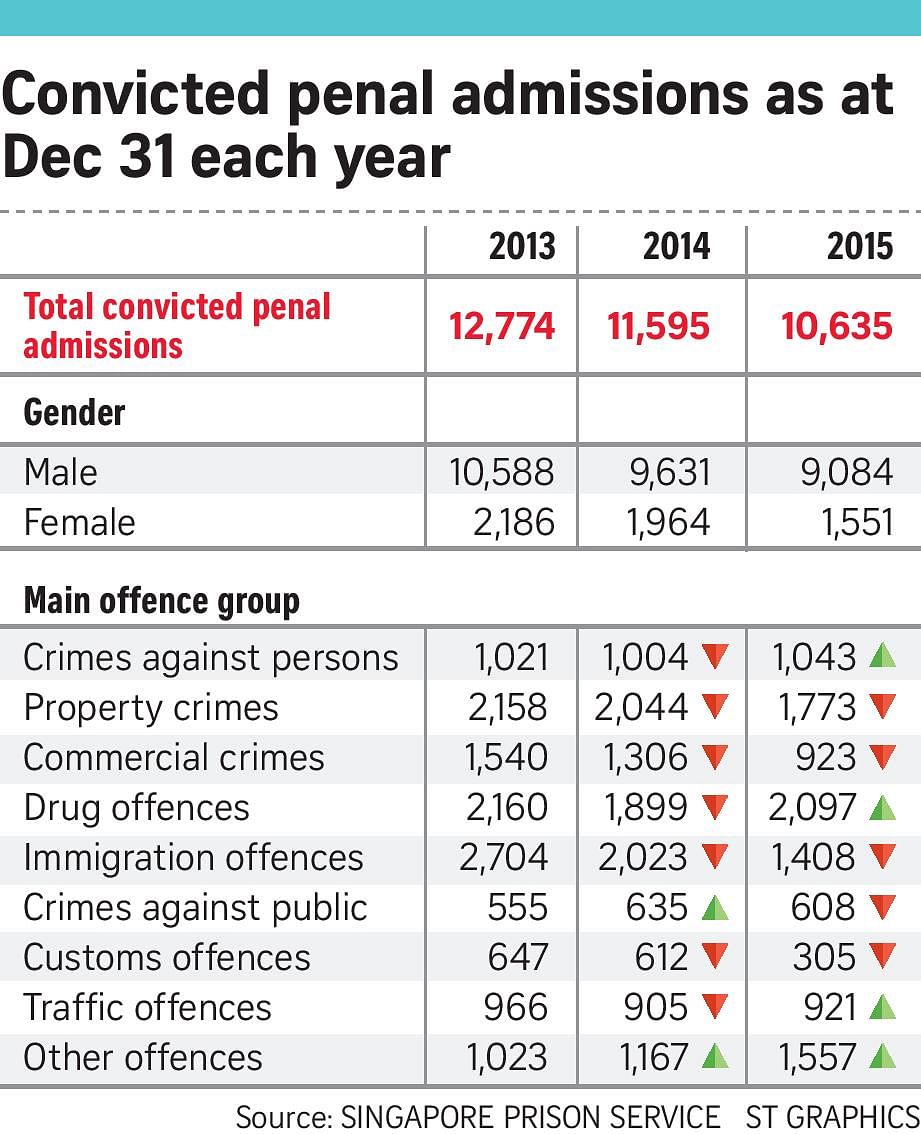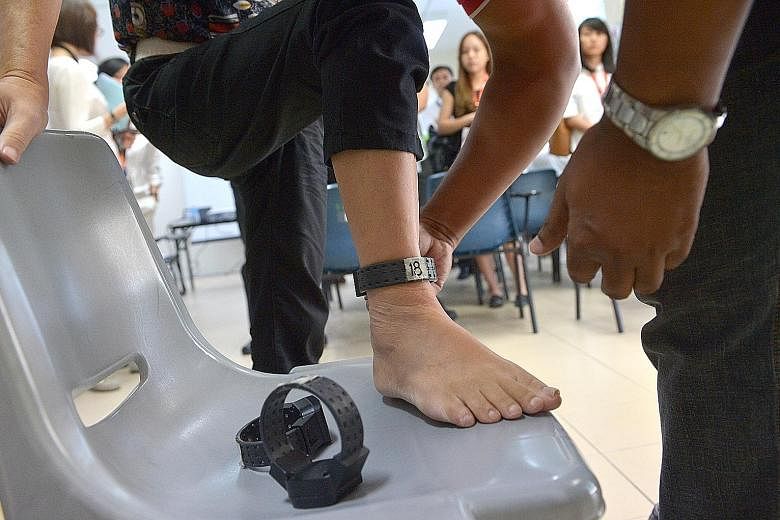More people who are sent to prison will receive stronger community support, during and after their internment, in a bid to break the cycle of re-offending.
This is because community-based programmes, in which inmates can serve the tail-end of their jail terms outside prison walls, have helped to keep overall recidivism rates "low and stable", said the Singapore Prison Service (SPS).
Of the total number of penal inmates put under such programmes, 96.9 per cent of the 886 in total successfully completed them last year, according to the latest annual prison figures released yesterday.
This was a slight increase from 96.7 per cent in the previous year.
In addition, the recidivism rate shows signs of dropping. The proportion of inmates from the 2013 cohort who re-offended within two years of their release dipped 1.7 percentage points to 25.9 per cent, from 27.6 per cent in 2012.
Rehabilitation and reintegration work does not stop at the end of an inmate's jail term but continues into the community, said Mr Rockey Francisco Jr, director of SPS' Community Corrections Command.

He stressed the importance of community partnerships in ensuring that inmates do not return to their old ways.
Before release, inmates are assessed if they are suitable for community-based rehabilitation and reintegration programmes based on their needs and risks. This includes criteria such as the nature of their offences, their conduct in prison and the presence of family support.
Those at lower risk of re-offending and with strong family support may be allowed to serve some of their sentence at home, under the Home Detention Scheme.
They will have to abide by stipulated curfew hours, which can be monitored through electronic ankle tags.
Others, who need a more structured environment, may be put on the Halfway House or Work Release schemes. For at least six months, those under these schemes will be supervised and counselled by officers from different community and government agencies, such as the Singapore Anti-Narcotics Association (Sana).
"We will contact inmates through phone calls or have face-to-face meetings to get updates. And together with the case workers, we will try to tackle any issues they may face," said reintegration officer Mohamed Azhar Mohamed Khaili.
Inmates identified to have a higher risk of re-offending may be placed on the Mandatory Aftercare Scheme, which requires them to undergo compulsory supervision for up to two years from their release.
Figures also showed fewer people going to jail last year. There were 10,635 convicted penal admissions in 2015, compared to 11,595 such admissions in 2014 and 12,774 in 2013.
As at Dec 31 last year, the overall penal prison population stood at 9,602, with female inmates making up about 8.5 per cent.
Meanwhile, more employers are being enlisted to offer suitable jobs to inmates, before their release.
The Singapore Corporation of Rehabilitative Enterprises (Score) has encouraged employers in the food and beverage, hospitality, logistics and manufacturing sectors to hire ex-offenders. Last year, 4,745 employers were registered with Score, a 7 per cent increase from 4,433 in the 2014. In addition, 2,042 inmates secured a job while still in prison last year, which is up 9.5 per cent from the 1,865 in 2014.


